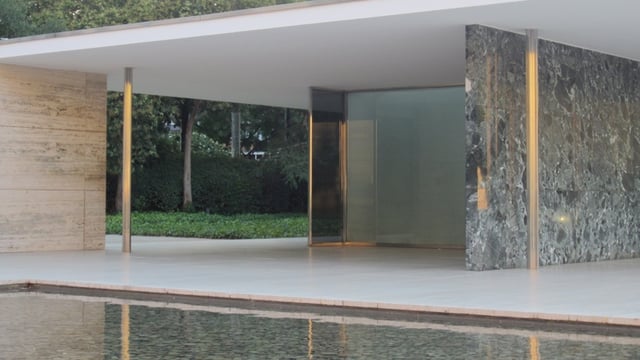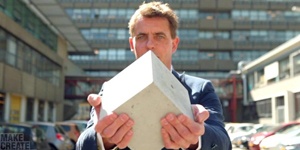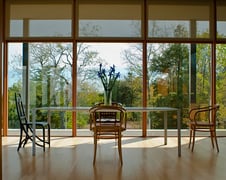On a recent trip through Barcelona, I stopped by the Pavelló Mies van der Rohe, the iconic structure designed as the German Pavilion for the 1929 International Exposition.
Most people are probably familiar with the chairs designed for this pavilion which are still sold today. The structure was only intended as a temporary installation and, as such, was destroyed within a year of its construction. However, its influence on architectural design lived on, and because of that, it was rebuilt in the mid 1980’s. Through the use of original plans and photographs, a team of Catalan architects (Cristian Cirici, Fernando Ramos, Ignasi de Solà-Morales) reconstructed the pavilion on its original site. This visit got me thinking about the role of architects, building reconstructions, and what preservation efforts are intended to achieve.
At the most basic level, we preserve objects, buildings and spaces as a means to educate people. In the case of buildings, they can take on significance because of their design or the people who lived there or their contribution to their greater surroundings. Buildings, unlike paintings or sculptures, are a collaborative effort that are rarely built by those who designed them, so one must ask: is this Mies’ building or something else?

I would argue that in this case it is Mies’ building, and that it meets the fundamental educational goal of preservation. While drawings and photos exist of the original structure, there is no substitute for standing in the actual spaces to fully appreciate their power and to understand how the building was situated on the site. If the pavilion had been constructed on a different site then it would fall into the category of being a copy since it would have lost its connection to its original context.
Other buildings by a famous architect have also been mired in controversy related to efforts to preserve them.
A Frank Lloyd Wright home originally built in New Jersey on a site where it was repeatedly subjected to flooding was recently disassembled and rebuilt in Arkansas. While the building lost its original context, the new site was carefully selected to maintain a similar intent and significant original fabric was retained from the original structure. Where necessary custom manufactured materials were made to replicate the originals to maintain the detailing. In this case, since original materials were preserved, the building still retains its status as a FLW original even though it is on a different site.
A recent article in Architectural Record, “Newsmaker: Filmmaker Michael Miner,” discusses the Frank Lloyd Wright Revival Initiative and the proposal to reconstruct lost FLW buildings on their original sites, specifically a pavilion in Banff, Alberta Canada. Depending upon the faithfulness to the original documentation and the extent of modifications required by code, the new building should meet the educational objectives of preservation. Here though, the art glass windows, which are such a significant feature of FLW buildings, will be the greater challenge to overcome and will likely be the key to whether or not the project will be deemed a ‘preservation’ success. In comparison, the large plate glass openings of the Barcelona pavilion, which also characterize that building, were easy to replicate.
Typically preservation efforts are focused on existing, standing structures, but there are times when reconstruction is necessary, such as when structures are destroyed by natural disasters, war or other less dramatic events including natural weathering. In these cases, sometimes extreme measures are required to bring the building back and, if done properly, do not diminish their integrity.
Too often though, a desire to avoid the loss of any ‘historic fabric’ ignores the realities of how materials age. Roofing, siding, and even window putty require replacement over time and these realities should be acknowledged. Not every building can be entombed in a glass case and treated as a museum exhibit representing just one moment in time. Buildings have lives and evolve over time. Our efforts need to recognize this as well as recognizing that preservation takes on many forms.
So is reconstruction a valid form of preservation? I guess the answer is that it depends on where and how it happens.





